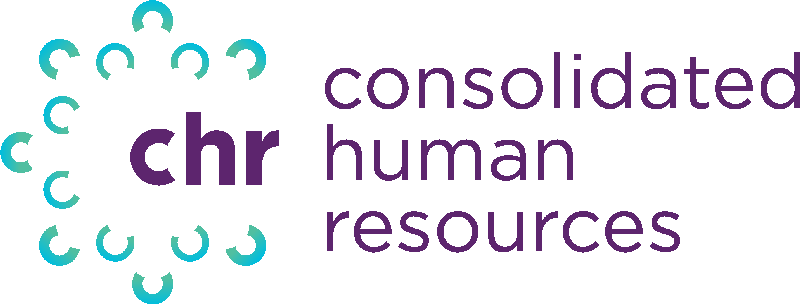The Families First Coronavirus Response Act and Your Business
In effect until December 31, 2020
On March 18, 2020, The United States Senate approved the Families First Coronavirus Response Act (FFCRA) and it was subsequently signed into law. The bill will provide free screening, paid leave and enhanced unemployment insurance benefits for people affected by COVID-19, the respiratory disease caused by the coronavirus. The information below details specifics that will impact employers.
This law covers all companies with up to 500 employees.
PAID SICK LEAVE
Benefit/Use: Employers with fewer than 500 employees must provide up to 80 hours of paid sick leave for qualifying reasons related to the COVID-19 outbreak.
Qualifying reasons:
- The employee is subject to a federal, state or local quarantine or isolation order related to COVID-19 isolate;
- The employee has been advised by a healthcare provider to self-quarantine due to COVID-19 concerns;
- The employee is experiencing COVID-19 symptoms and seeking medical diagnosis;
- The employee is caring for an individual subject to a federal, state or local quarantine or isolation order or advised by a health care provider to self-quarantine due to COVID-19 concerns;
- The employee is caring for the employee’s child if the child’s school or place of care is closed or the child’s care provider is unavailable due to the public health emergency or;
- The employee is experiencing any other substantially similar condition specified by the Secretary of Health and Human Services in consultation with the Secretary of the Treasury and the Secretary of Labor.
Eligibility:
All employees on payroll are eligible for this benefit. There is no tenure requirement and must be made available immediately for use by the employee upon notice of a qualifying reason.
Benefit/Payment Details:
- Employers cannot require employees to use vacation or other sick time before using this benefit.
- Employers must pay full-time employees 80 hours of pay at the employee’s regular rate or two-thirds of their regular rate for qualifying reasons 4, 5, or 6 listed above. See the maximum wage information below.
- Employees who work a part-time or irregular schedule are entitled to be paid based on the average number of hours the employee worked for the six months prior to taking paid sick leave. Employees who have worked for less than six months prior to leave are entitled to the average number of hours the employee would normally be scheduled to work over a two-week period.
- Paid sick leave wages must be paid at the highest of the employee’s regular rate, the federal minimum wage, or the applicable state/local minimum wage, to a max of $511per day (and $5,110 in aggregate) per employee if paid leave is requested for reasons1-3 above (i.e., for their own use) and a max of $200 per day ( and $2,000 in aggregate) to care for a sick family member, a child unable to attend school, or who meet the “substantially similar conditions” criteria.
- Employers who are party to multi-employer collective bargaining agreements may meet their obligations by contributing to a multi-employer fund, plan, or program based on the hours its employees are entitled to under the Act while working under the collective bargaining agreement, as long as employees may secure pay from the fund, plan, or program for qualifying uses under the Act.
Carryover:
Emergency Paid Sick Leave will not carry over to the following year and will be in addition to any paid sick leave currently provided by employers.
Notice Requirements:
- An employer may require reasonable notice from an employee to continue to receive paid sick time.
- An employee who has not used all the paid sick time must return to work after the need for leave ends.
PAID FAMILY AND MEDICAL LEAVE
The new law takes a long-standing job-protection statute once applicable to employers with 50 or more employees and adds a “paid” element to it, and expands the application to all employers with up to 500 employees (see exemptions indicated below).
Benefit:
Employees are eligible for up to 12-weeks of job-protected leave to allow an employee, who is unable to work or telework due to the need:
- to care for the employee’s child (under 18 years of age) if the child’s school or place of care is closed; or
- when childcare provider is unavailable due to a public health emergency.
Eligibility:
Workers must have been on the payroll for at least 30 calendar days prior to the designated leave. There is no minimum-hours threshold.
Benefit/Payment Details:
- Employers cannot require employees to use vacation or other sick time before using this benefit. This benefit is in addition to time already available under the employer’s existing policies.
- There is a ten-day waiting period before this benefit applies. During this ten-day period, an employee may use:
– existing paid time off benefits (sick, vacation or paid time off), or
– emergency paid sick leave benefit (see above Paid Sick Leave) - After the ten-day period, the employer must pay full-time employees at two-thirds the employee’s regular rate for the number of hours the employee would otherwise be normally scheduled.
- Employees who work a part-time or irregular schedule are entitled to be paid based on the average number of hours the employee worked for the six months prior to taking paid sick leave. Employees who have worked for less than six months prior to leave are entitled to the average number of hours the employee would normally be scheduled to work over a two-week period.
- The maximum pay entitlement is $200 per day (or $10,000 total) per employee.
Exemptions:
Employers with less than 50 employees may apply for an exemption through the Department of Labor if the leave would jeopardize the viability of their business. More guidance on this shall be forthcoming once it has been made available.
Employers with fewer than 25 employees do not have to restore employees to previous or equivalent position. This exclusion is subject to the employer making reasonable attempts to return the employee to an equivalent position and requires an employer to make efforts to return the employee to work for up to a year following the employee’s leave.
Each of the following conditions must be met:
- The employee takes leave to care for the employee’s child because the child’s school or other place of care has been closed, or the childcare provider of such child is unavailable due a COVID-19 related emergency declared by a Federal, State or local authority.
- The position held by the employee when the leave commenced does not exist due to economic conditions or other changes in operating conditions of the employer that affect employment and are caused by a public health emergency during the period of leave.
- The employer makes reasonable efforts to restore the employee to a position equivalent to the position the employee held when the leave commenced, with equivalent employment benefits, pay, and other terms and conditions of employment.
- If the reasonable efforts of the employer fail, the employer makes reasonable efforts to contact the employee if an equivalent position described becomes available. This “contact period” remains in effect for the one-year period beginning on the earlier of: (a) the date on which the qualifying need related to a public health emergency concludes; or (b) the date that is 12 weeks after the date on which the employee’s leave commences.
EMPLOYER FICA SS & MEDICARE TAX CREDITS
While both forms of paid benefits are issued from covered employers for the qualified events indicated above, the Act provides for a payroll tax credit equal to 100% of the qualified paid sick leave paid by an employer for each calendar quarter when reporting 941 FICA Social Security & Medicare employer contributions. The tax credit is capped at the same rate maximum per day as noted above. The Act also provides for a similar method of payroll tax credit equal to the 100% of the qualified FMLA pay issued by an employer for each calendar quarter and applied against the employer Social Security contributions, and both tax credits end on December 31, 2020 (so presumptively they will be applied in your 2nd, 3rd, and 4th quarter 2020 filings). If we manage your payroll and tax-filing now, we will work to ensure the proper credits are obtained and duly credited back to you. More guidance is required on this and it shall be forthcoming in the coming days and weeks, and we will be sure to keep you duly informed.
ENHANCED UNEMPLOYMENT COMPENSATION BENEFITS
The Act provides financial aid to states who agree to waive any waiting period for UI benefits, waive the work requirements for employees directly impacted by COVID-19, and does not charge employer accounts for these disaster-related benefits. Thus far no indication on any increased UI benefit or extension of such benefits.
NO DISCRIMINATION OR RETALIATION
Employers are prohibited from discharging, disciplining, or otherwise discriminating against anyone who takes paid sick time. In addition, no retaliation is permitted against employees under the new law for reporting complaints, testifying or instituting proceedings related to the law.
If you have any questions regarding this information, please contact:
HR Compliance Department
(877) 801-8400 (option 3)

